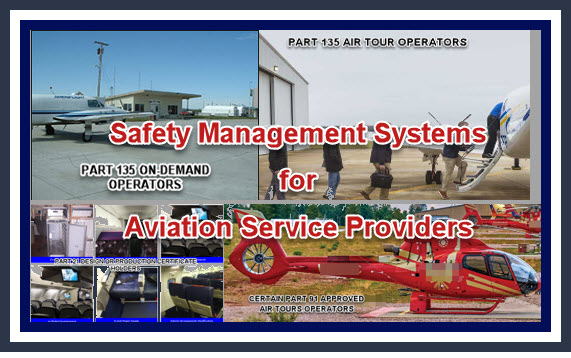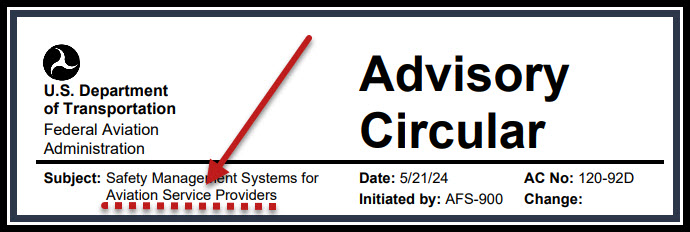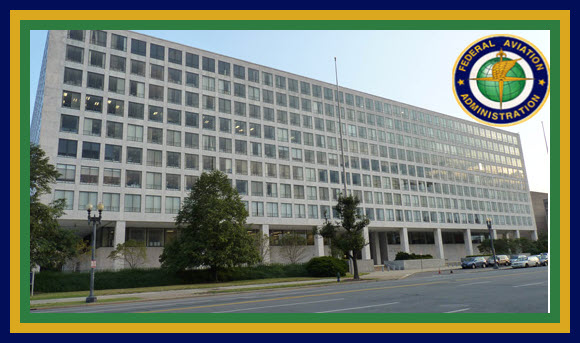FAA AC adds useful advice for SERVICE PROVIDERS to implement SMS

The FAA recently issued AC Advisory Circular AC 120-92D
In this social media world, many expert commentors have labeled SAFETY MANAGEMENT SYSTEMS as unduly burdensome, too “one size fits all”, not sizeable/flexible enough and a variety of other criticisms, in spite of the fact that the ILO, ICAO, NTSB, EASA, FAA, and most CAAs have endorsed it as the premier and most effective aviation safety methodology . These problematic points were escalated when the FAA announced that this risk-reducing regimen would be applied to “AVIATION SERVICE PROVIDERS OPERATING OR APPLYING FOR A CERTIFICATE OR LETTER OF AUTHORIZATION (LOA) TO OPERATE UNDER 14 CFR PART 91, § 91.147 OR PART 121 OR 135.”
JDA’s SMS team, who have extensive experience in implementing the 14 CFR Part 5 rubric with large and small entities, disagrees with these contrary reviews. As this advisory document states, it provides “an effective SMS but does not specify particular methods for implementing these processes” for Aviation Service Providers.

The 130 page document is straight forward and does a good job of explaining how to implement SMS. The authors have done an excellent job summarizing all that companies must meet to comply with Part 5. In particular, AC 120-92 makes it clearer what Single Pilot organizations must do to meet Part 5, a helpful set of examples of compliance statements for this class of operators (not a requirement, but such manuals have facilitated approvals by the field offices).
Our team members noted that this is very instructive presentation and explanation of the 7 SAS SAFETY ATTRIBUTES and how they are key components of an SMS. Through our work with many Part 135 operators only one such air carrier included the 7 attributes in their manuals, documents // processes and procedures.
This most recent iteration of the FAA’s explanation of SMS highlights what US companies flying or intending to fly in other countries through a Excellent table comparison the detailed differences between FAA Part 5’s and ICAO’s SMS requirements.
Though the FAA does not endorse any specific third-party SMS providers, the AC makes some useful comments of their potential value to an applicant:
The FAA and many industry stakeholders have gained significant experience with SMS principles in the years since part 5 was originally published. As SMS requirements expand to other organizations, the FAA expects more third-party providers to offer 5/21/24 AC 120-92D 5-5 services to aid aviation organizations in developing and implementing a part 5 compliant SMS.
5.3.2 Aviation organizations may work with a third-party provider to develop or implement an SMS that meets part 5 requirements. A third-party SMS provider could assist in developing the SMS and training the operator to use it. Producing and providing software applications to aid in SMS documentation and recordkeeping are other potential support services of third-party providers. Other options could include not only development and training but the third-party provider could also operate some parts of the SMS on behalf of the aviation service provider. As an example, many third-party providers offer mediation services for employee ASAP reporting programs. The organizations serve as mediator and de-identify the reports, meet with the FAA to discuss the report, and work to develop a corrective action to mitigate the reported hazard or reason for the report. The third-party provider would then provide periodic reports on the aggregated ASAP reports received and moderated with corrective actions so the aviation organization could enter the data into their SMS for monitoring if it is applicable to the activities conducted by the aviation organization.
5.3.3 When considering utilizing a third-party organization to assist with SMS management, there are some areas that cannot be delegated. For instance, the ACCOUNTABLE EXECUTIVE RESPONSIBILITIES and roles cannot be delegated to a contractor.
5.3.4 Aviation organizations are encouraged to leverage their existing SMS processes, whether developed in-house or developed by third-party contractors, to meet part 5 requirements and to utilize all available industry resources, such as educational institutions, international organizations, and FAA guidance and support. AVIATION ORGANIZATIONS REMAIN FULLY RESPONSIBLE FOR ENSURING REGULATORY COMPLIANCE.
The value of this technique to manage risk has been recognized by insurance companies; so the time devoted to building an SMS safety culture can be forecast as benefitting the bottom line. Contrary to all the naysayers, our experiences have uniformly been positive and once implemented, the companies found the results to significantly elevate their SAFETY CONSCIOUSNESS.

XXXXXXXXXXXXXXXXXXX
Advisory Circular Issued on New SMS Rules
Document provides SMS guidance for Part 91, 135, and 121 operators

By GORDON GILBERT • Contributor – Accidents and Regulations
July 24, 2024
The FAA recently published Advisory Circular AC 120-92D to help operators comply with new rules that require certain operators to develop safety management systems (SMS) under FAR Part 5. The new requirements apply to PART 135 ON-DEMAND OPERATORS, AIR TOUR OPERATORS, PART 21 DESIGN OR PRODUCTION CERTIFICATE HOLDERS, AND CERTAIN PART 91 OPERATORS APPROVED TO CONDUCT AIR TOURS.
The 130-page document also UPDATES A 2015 AC and applies to operators previously required to have an SMS under Part 5, such as Part 121 and 135 airlines. This revised circular also might assist aviation organizations interested in receiving “FAA acknowledgment” of their voluntary development and implementation of an SMS. Additionally, the AC provides organizations with a METHOD TO MEET ICAO ANNEX 19, which addresses “safety management framework for an SMS acceptable to the state.”
Because operators range widely in complexity and size, the circular states that SMS policies, methods, and procedures CAN BE TAILORED AS NEEDED. However, this scalability “does NOT ALLOW the aviation organization to SET ASIDE ANY SECTIONS OF PART 5.” The AC provides some examples of how an organization may integrate “new practical, economical, and effective SMS methods and procedures that complement their existing operations and processes while leveraging the policies, procedures, or methods already in place that comply with Part 5.”

XXXXXXXXXXXXXXXXXXX